September 17, 2020
Bee Friendly Champions Mikaila Ulmer and Leslie Uppinghouse
Since childhood, autumn’s rich colors, scents, and golden light make it my favorite season. Even before trees don their cloaks of many colors, I’m entranced by American beautyberry’s glossy, purplish fruits. Although we can eat them when totally ripe, I leave them for birds and squirrels.
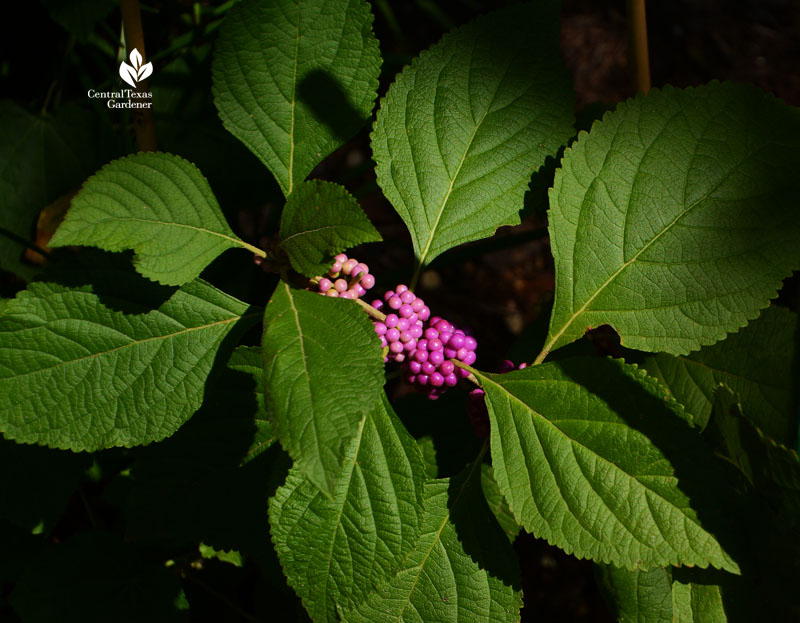
This native perennial shrub for part shade double duties. In spring, tiny nectar-rich flower clusters signal pollinating bees and butterflies.
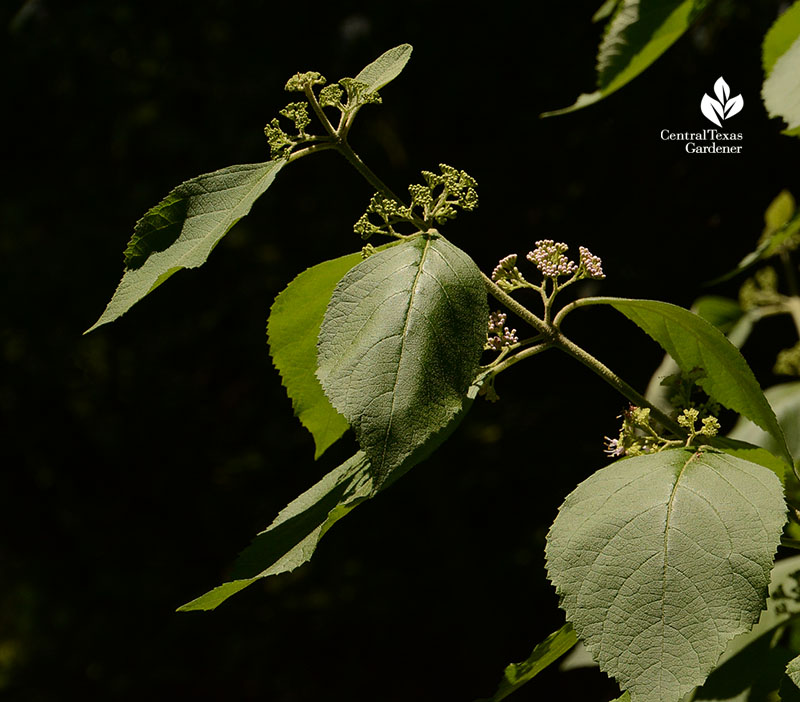
My garden’s full of multi-tasking shrubs and trees. Native yaupon holly draws bees to spring flowers while birds snack on fall and winter’s fruits.
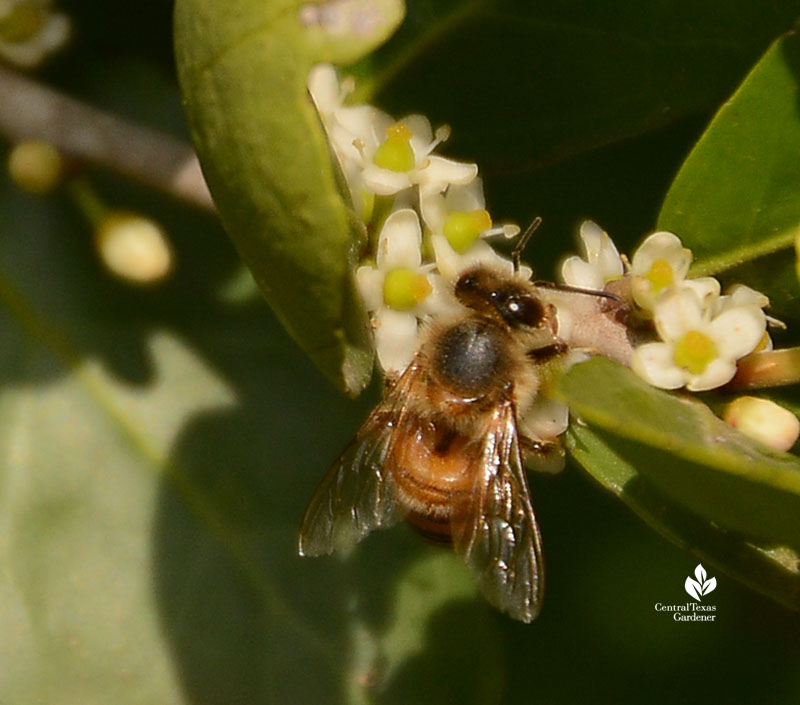
As I wrote this on my patio one muggy evening, shrubby, gangly almond verbena (Aloysia virgata), native to Argentina, wafted cookie-scented fragrance my way, delighting every bee in the neighborhood.
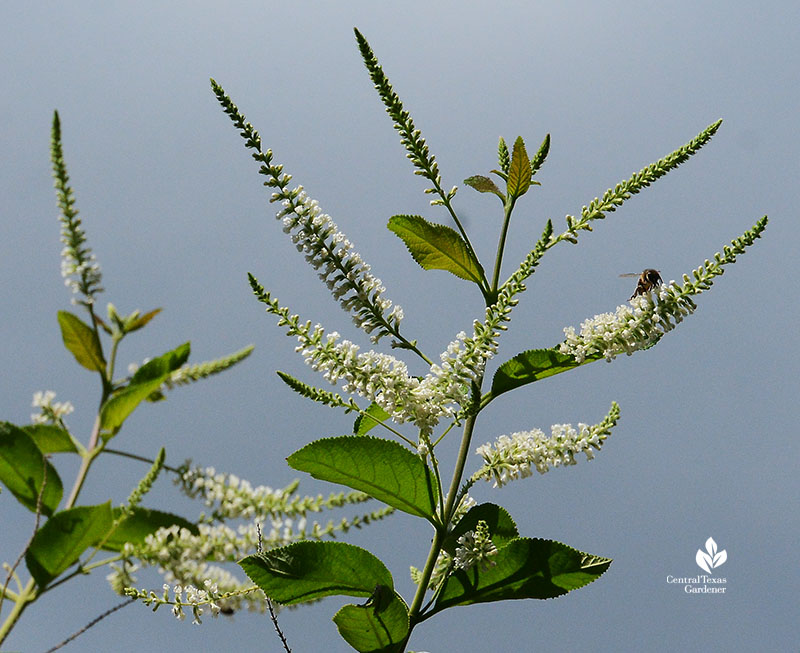
I don’t yet have native bee-brush (Aloysia gratissima), but it’s just as bee-loved for its fragrance in late summer/early fall.
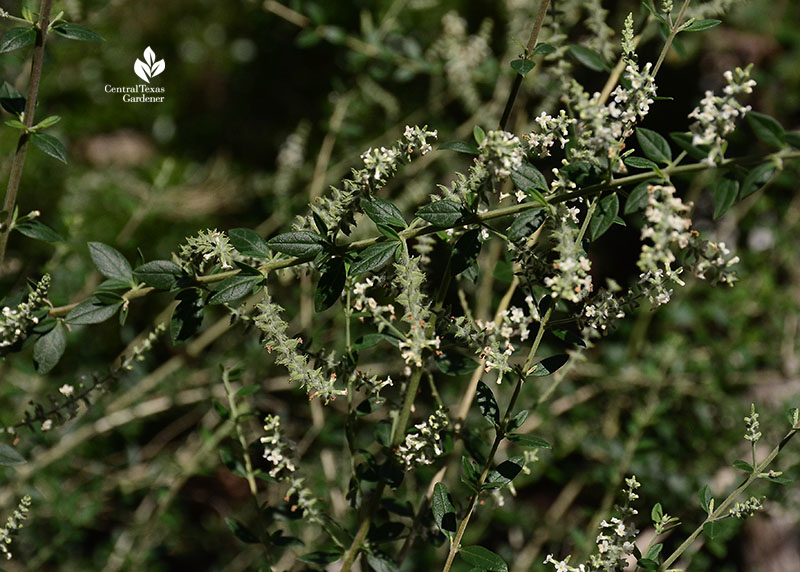
My young native woolly bee-brush (A. macrostachya) sports lavender flowers, though without scent my nose detects.
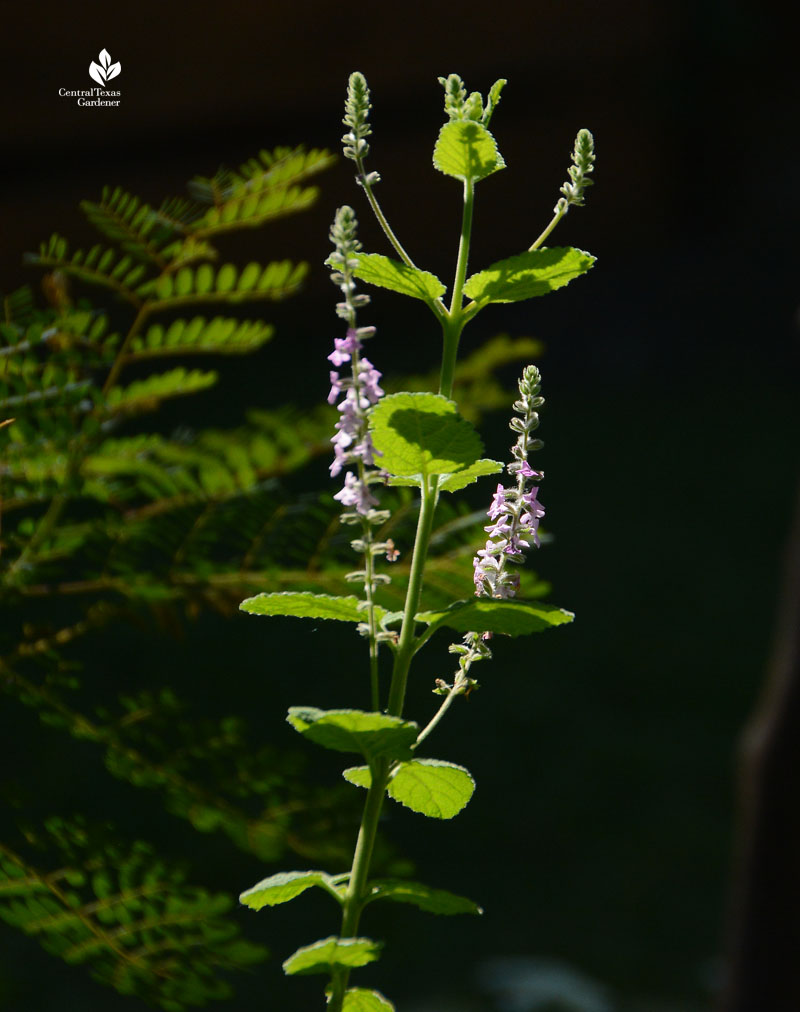
This week, meet bee champions Mikaila Ulmer, founder and CEO of Me & the Bees Lemonade, and Leslie Uppinghouse, Lady Bird Johnson Wildflower Center horticulturist.
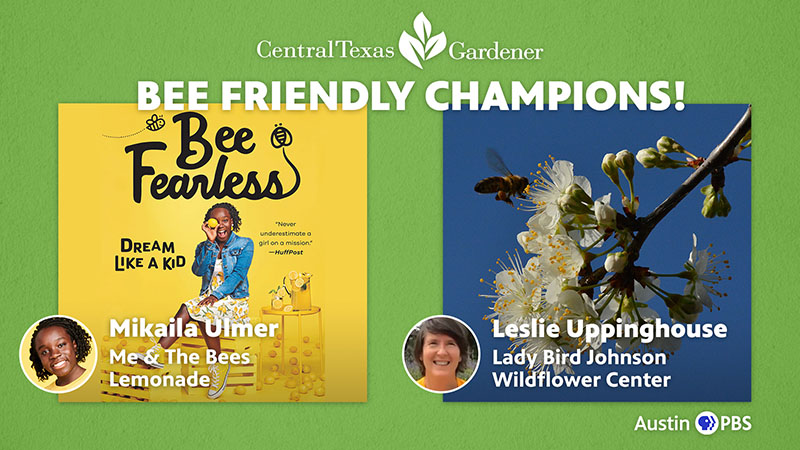
Mikaila’s commitment began at age four when she was stung by two bees within a week. Some children carry fears of a particular insect through adulthood, but Mikaila’s parents, D’Andra and Theo Ulmer, deflected that one by encouraging their daughter to learn everything she could about bees.
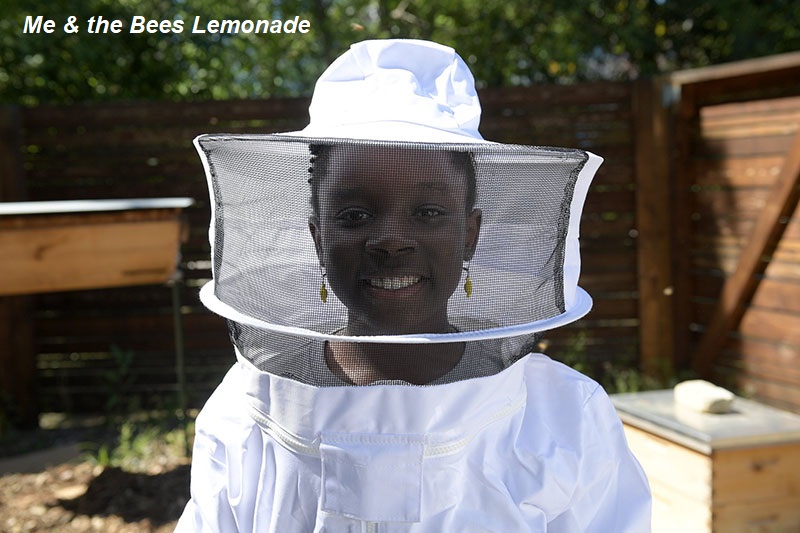
When Mikaila understood how critical bees are to our food supply by pollinating crops, and that they’re deeply endangered, she wanted to help. She decided to make lemonade for then-annual Lemonade Day and the Acton Childrens’ Business Fair.
With help from her parents (hey, she was four!), Mikaila adapted a flaxseed honey lemonade recipe from her great-grandmother Helen as a healthier alternative to sugar-drenched refreshments. In just a few years, thanks to support from local businesses, Me & the Bees Lemonade went from sidewalk lemonade stands to 1500 stores across the country.
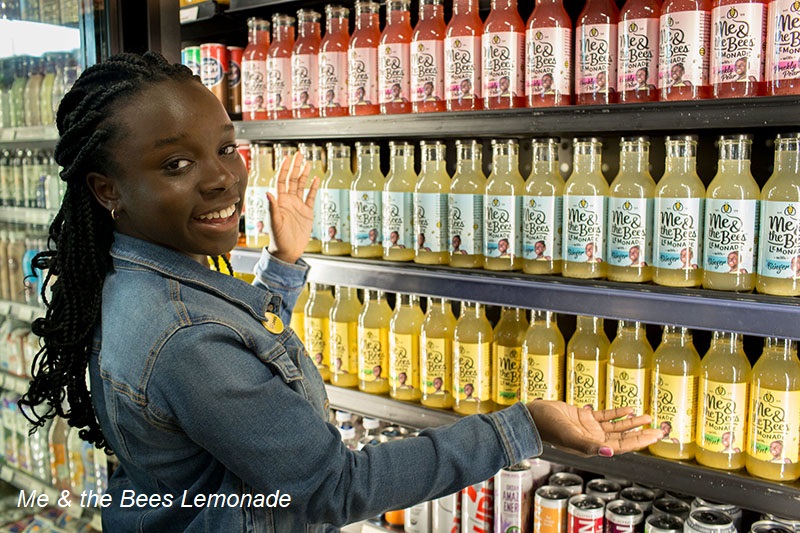
From her first sidewalk sales, Mikaila donated a percentage of profits to organizations supporting bees. As a young social entrepreneur, she founded Healthy Hive Foundation, a non-profit dedicated to education, research, and bee protection.
At age 15, Mikaila documented her journey in Bee Fearless: Dream Like a Kid. Although written for a young audience, I highly recommend it to every adult who wants to turn vision into reality. Along with interesting facts about bees, you’ll learn a LOT about the complicated business of creating your own branded product.
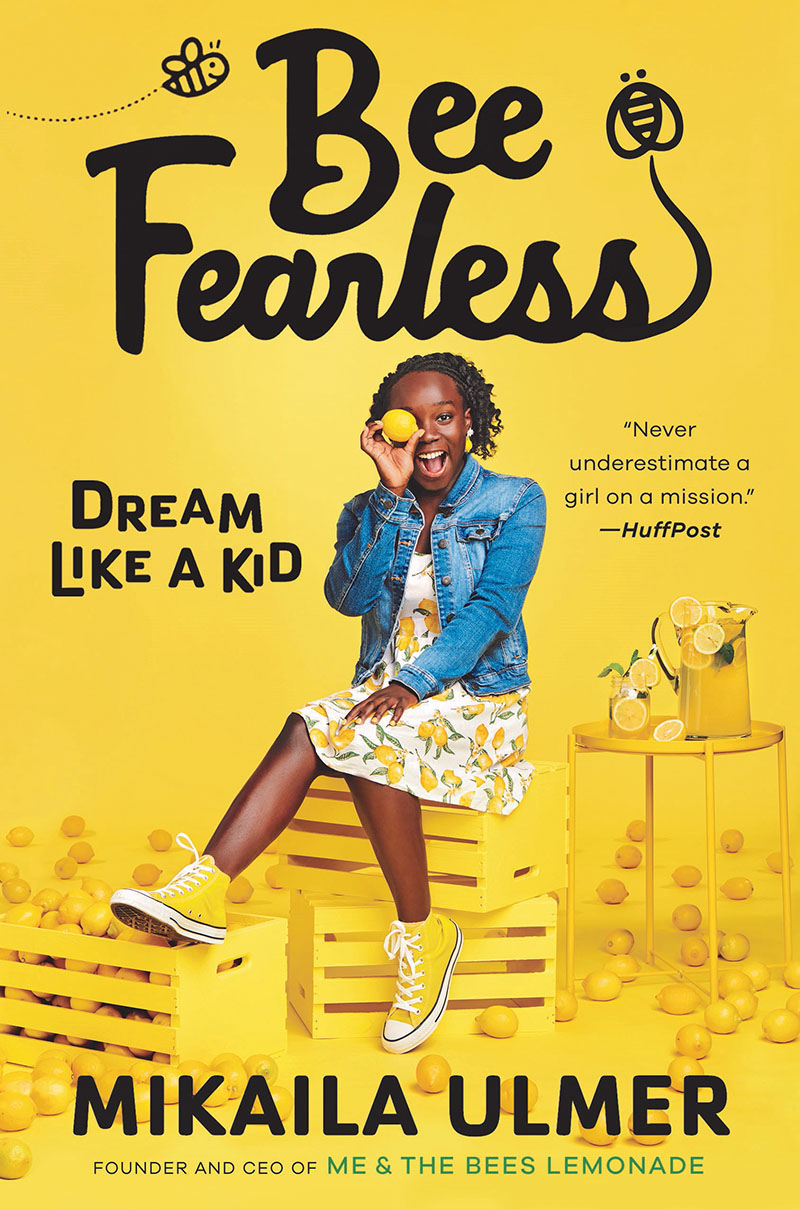
Then, I met with Leslie Uppinghouse about what we can plant for the bees this fall. Like Mikaila’s interview, we did this via Zoom. At the Wildflower Center, hundreds of bumblebees frolicked on mealy blue sage behind her. This picture is from one of my travels.
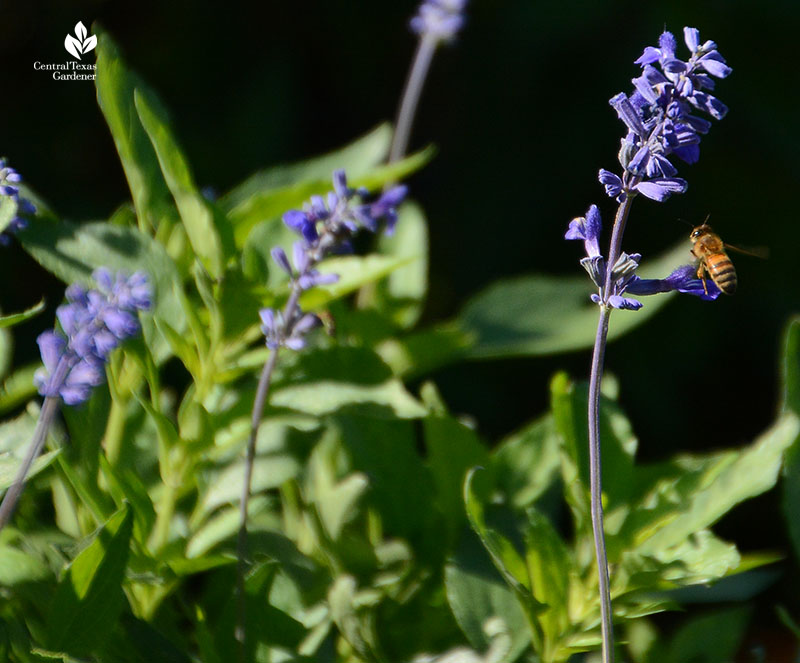
Props to K. Angel Horne, Wildflower Center PR, Media & Marketing Coordinator, who wrangled Leslie’s record. On my end, I thank Austin PBS videographer Alex Wolff who jumped in as backup Zoom tech and assist.
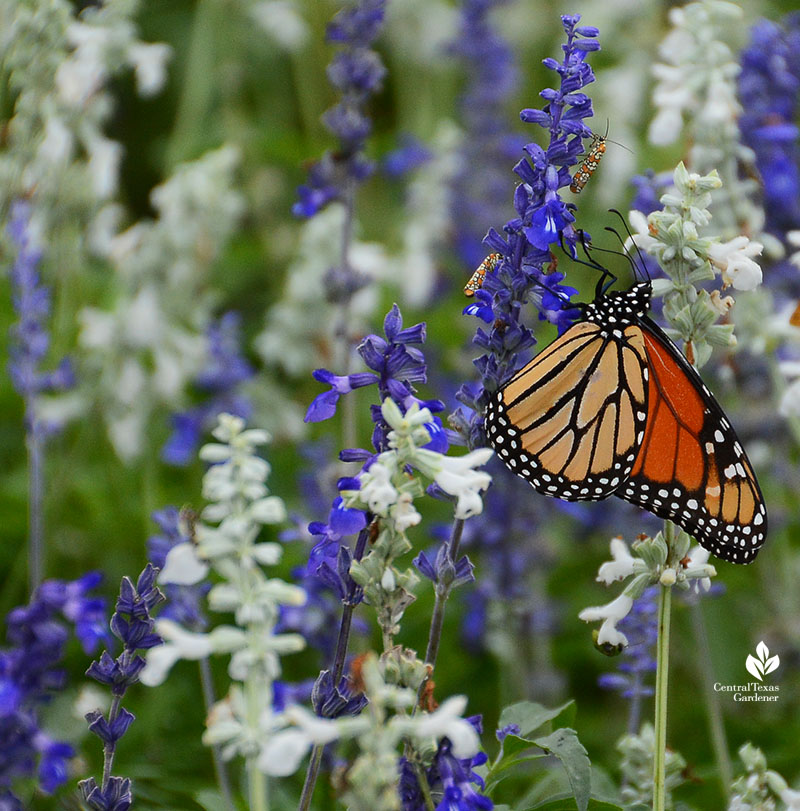
Now that fall weather beckons, we can start planting seeds for the bees, including iconic bluebonnets.
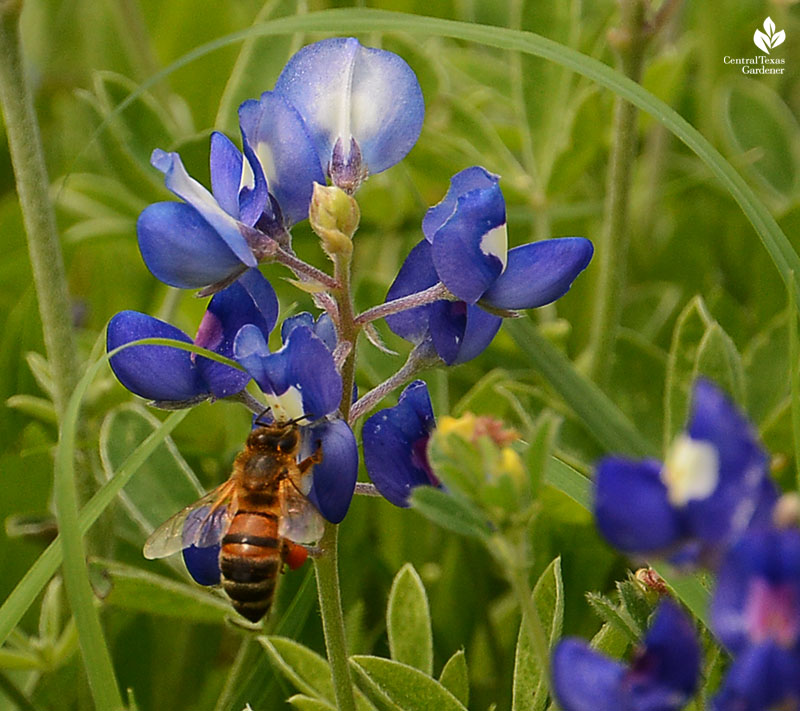
And Firewheel (Gaillardia pulchella): late spring flowers
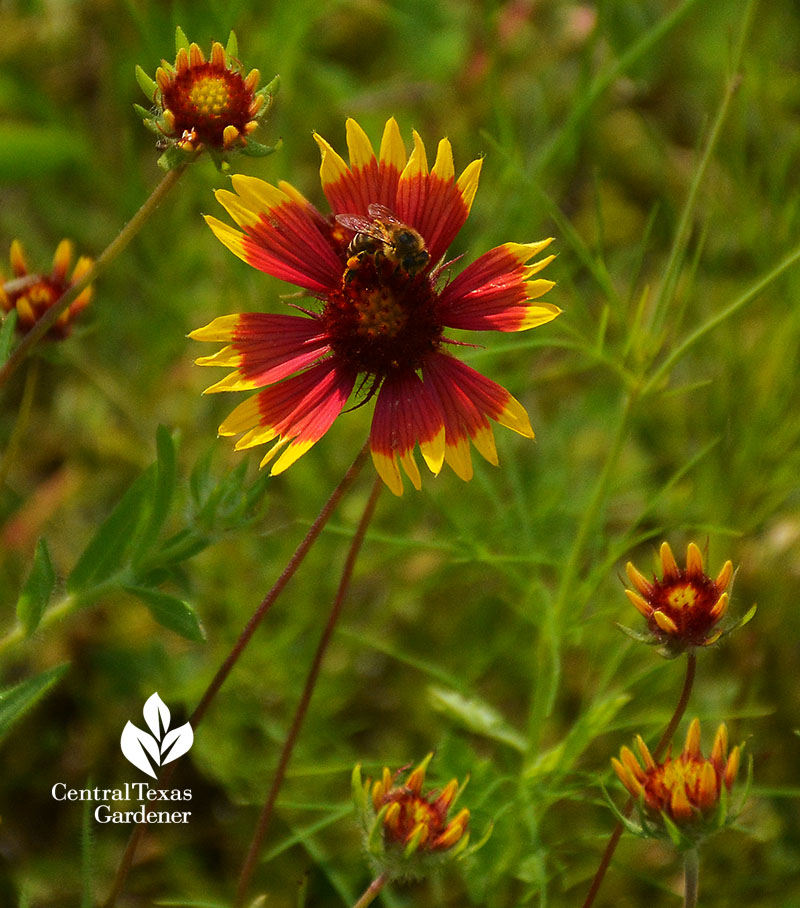
Standing cypress: late spring, early summer flowers
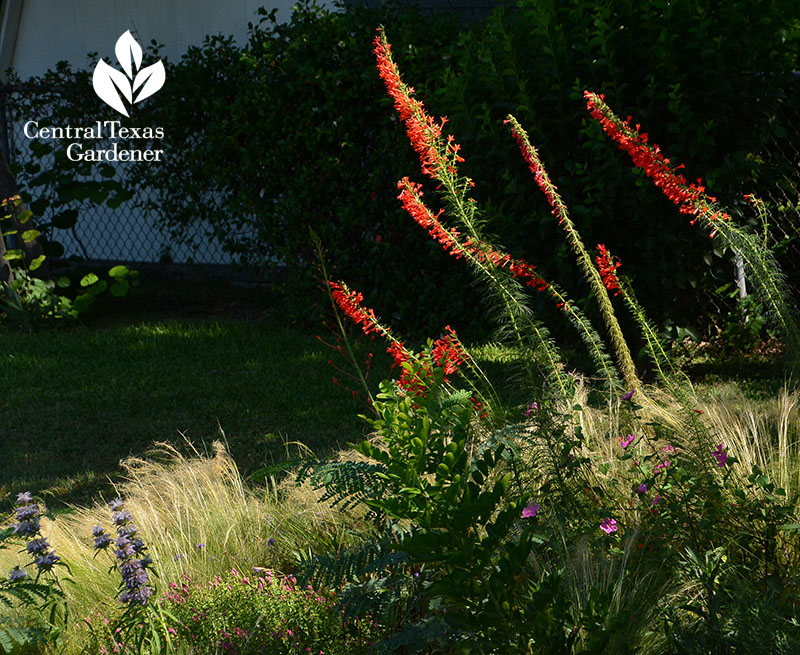
American Basket-flower: late spring, early summer flowers
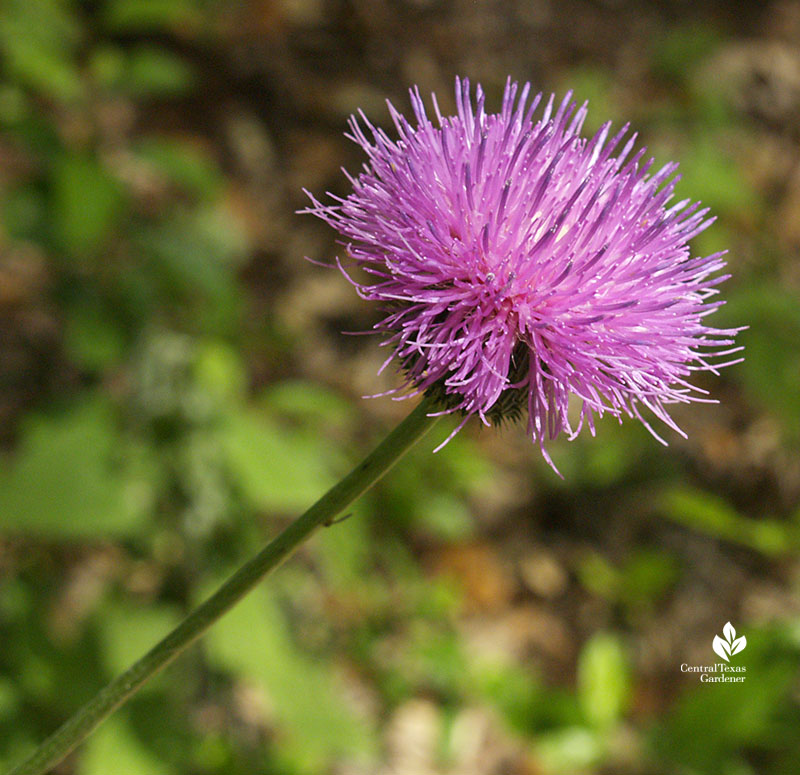
Partridge pea: summer, fall flowers
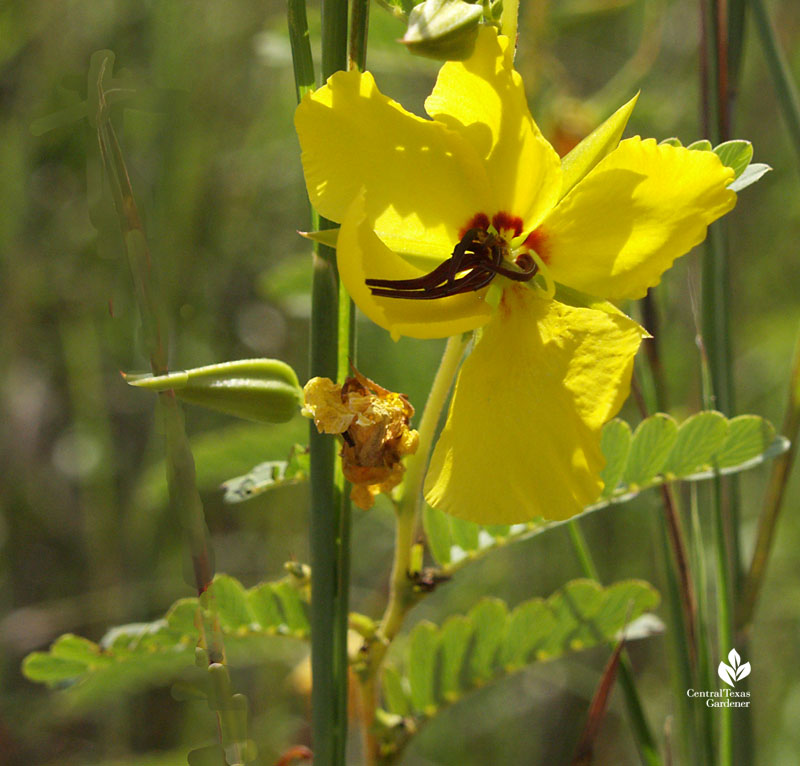
Absolutely essential is to keep soil moistened until seeds germinate. Since we can get hot, dry days even into November, keep seedlings watered if we don’t get adequate rainfall. Countless CTG viewers have lost abundant stands by not watering when temps soared and the ground was dry.
Perennial superstars include fall-blooming perennial asters for bees and butterflies.
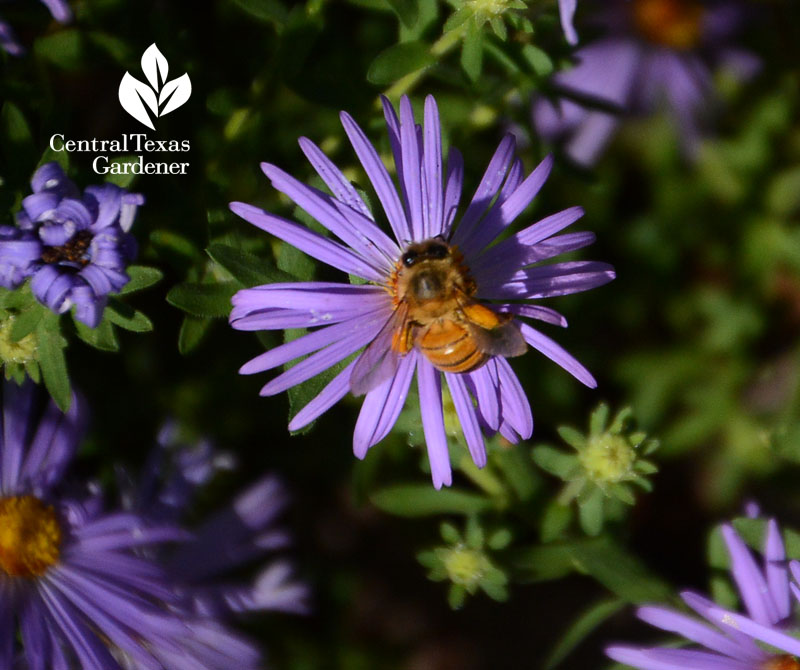
Turk’s cap feeds bees and butterflies from late summer to first frost. This perennial browns on top after freezing weather, returning with vigor in late winter.
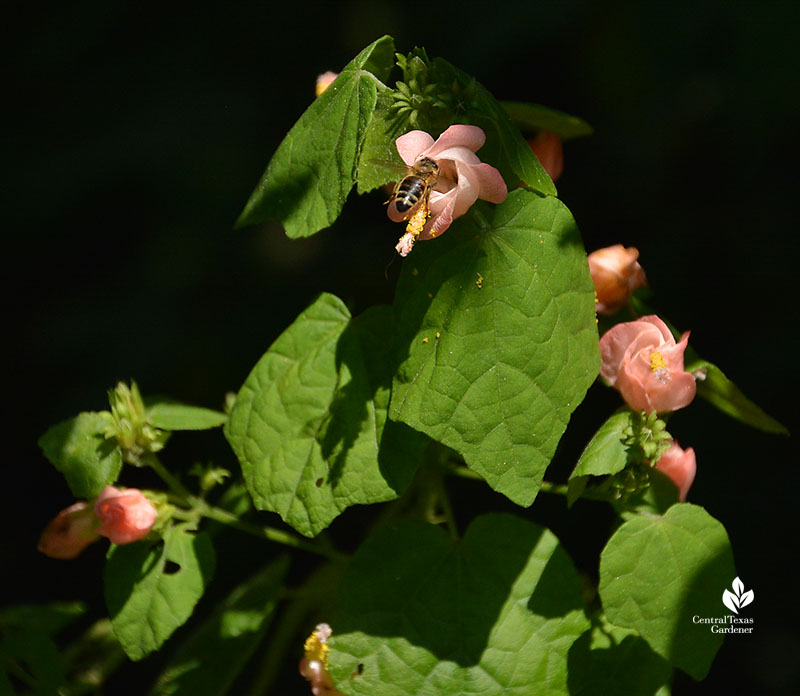
Cover your ground with evergreen frogfruit; its tiny flowers attract bees and butterflies from late spring through fall.
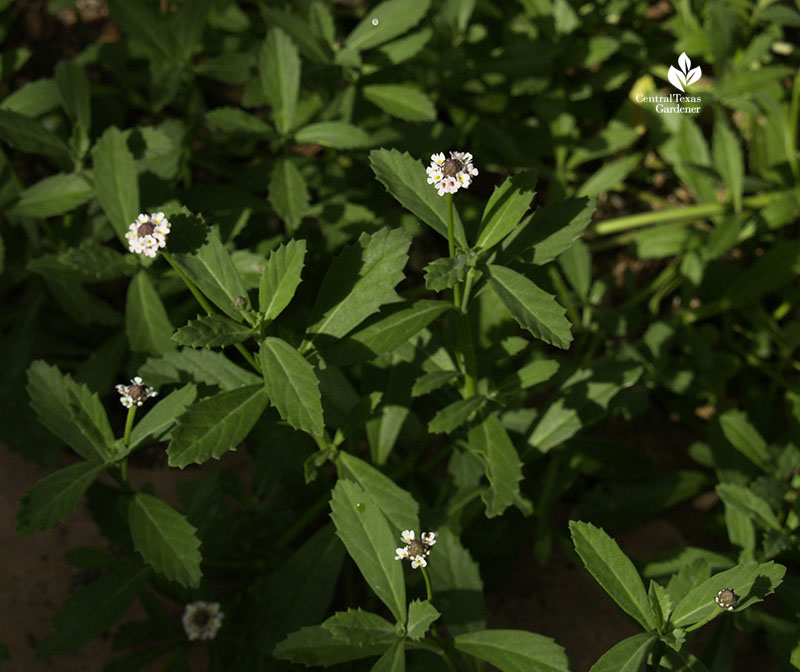
Spring-flowering trees reward us with fragrance and show-stopping beauty while feeding bees, especially in late winter when food supplies may be low. Majestic huisache embraces bluebonnets at the Mueller wildflower meadow and food forest.
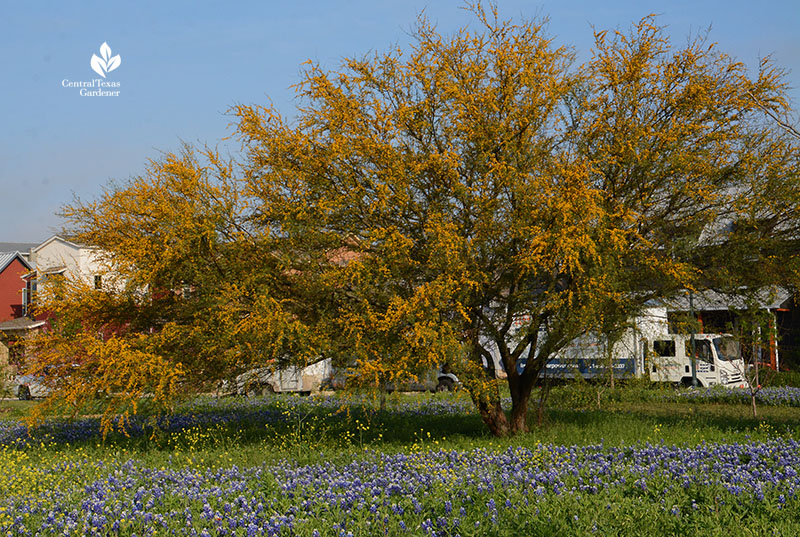
Eagerly I await February when my Mexican plum bursts into fragrant blooms, alive with native bees and butterflies sipping up on sunny, warm days.
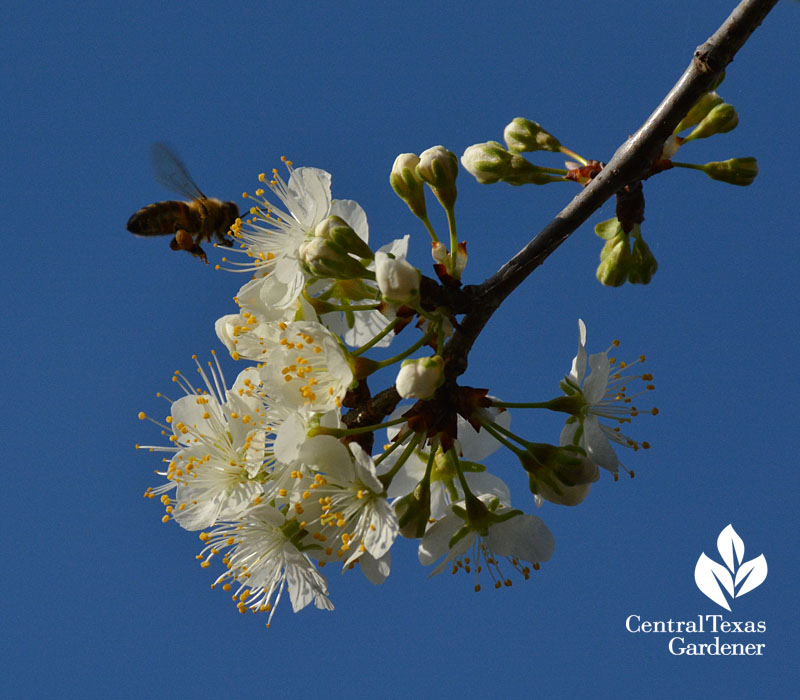
Check out these fantastic resources that Leslie mentions.
The Jha Lab at the University of Texas for fantastic bee information and much more!
The Wildflower Center’s Plant Collections site is an incredible plant list resource for all bees, butterflies, and hummingbirds.
Register now for the Wildflower Center’s extended fall plant sale.
Other plant sales
Hays County Master Gardeners online and pickup tree and plant sales (order soon!)
TreeFolks Neighbor Woods free trees for Austin residents
Watch Bee Friendly Champions now!
Thanks for buzzing by! See you next week, Linda
tags:

